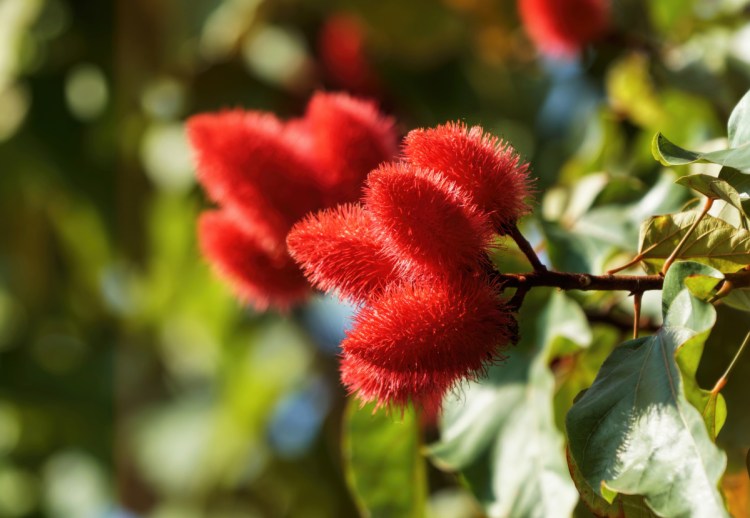The term “botanical garden” covers a wide range of plantings. Some are eye-catching and beautiful, while others have a more scientific raison d’être.
My wife Nancy and I toured three tropical botanical gardens on a recent 14-day cruise from Miami through the Panama Canal to Los Angeles. While all three shared some plant species, each had a different purpose.
The most ambitious of the three was the Environmental Botanical Garden at the National Autonomous University of Nicaragua in Leon.
The 30-acre garden, which has about two miles of walking trails, is designed to replicate four different types of Nicaraguan forests – moist tropical forests, dry tropical forests, transitional areas and riverfront areas. It’s not a garden that will impress visitors with masses of flowers, although many of the plants blossom and will be beautiful at certain times. Instead, it’s designed to preserve examples of the country’s native forest.
As in the rest of the world, Nicaragua’s ecosystem is threatened by climate change. This garden will preserve at least an example for future study and maybe replanting elsewhere. It supports birds and other wildlife and is a peaceful refuge.
The Botanical Garden of Acapulco, in Mexico, is more what people usually think of as a botanical garden – an outstanding mix of native and imported tropical plants. It covers about 14 hilly acres on the campus of Loyola University of the Pacific and was begun in 2001 by the Acapulco Garden Club with the assistance of the university. Situated on a granite hill, it makes excellent use of huge granite boulders throughout the site, and has many water features. In several spots, visitors can catch a glimpse of Acapulco Bay glimmering in the distance through the plants.
The garden has at least two pond gardens, which include many water lilies, lotus plants and quite large koi fish. One section showcases desert plants. Labeling is excellent, although the labels don’t include English translations of the plants’ common names. In addition to the common names in Spanish, the labels give the botanical name (in Latin) for each species, so visitors can check catalogs when they get home to see if plants they admired while strolling in the garden are available for growing at home. The garden has several plants that are in danger of extinction, such as the purple heart tree, Peltogyne mexicana, a huge tree prized for the purple color of its wood when cut, threatened by both climate change and overharvesting.
The Pura Vida Gardens and Waterfalls in Jaco, Costa Rica, is different from the previous two gardens (and probably from most other public botanical gardens in the world) in that it was created by just one couple, David and Cindy Stannard, who moved to Costa Rica from Texas, bought some farmland and created the gardens. David Stannard – who personally greeted everyone on the busload of people from our cruise ship – said he wanted “to give people a chance to see what the houseplants they have at home look like in the wild.”
The 50-acre garden sits on a mountaintop, reached by winding roads, and has miles of trails, many with steep hills and stairways. With temperatures in the 90s, it didn’t take long for many of the visitors – including Nancy and me – to get worn out. Fruit punch and fruit salads after the tour revived us.
The garden had few labels, but our guide for the ship-sponsored tour knew the plants well so ably explained what we were seeing.
Because March is the dry season and water flow was low, the waterfalls were underwhelming. Or maybe we are so used to seeing waterfalls in Maine, we’ve become blasé?
I’ve saved the best for last – the individual plants – because many of the same ones grew in several of the gardens.
Understand that these are all tropicals. If you want to attempt them in Maine, you’ll need to find space for them indoors during winter. They can, and probably should, go outside for the summer. After seeing heliconia at all three of the gardens, we have decided we want to grow them at home – assuming we can find some for sale. Heliconia come in many varieties and colors, some with the flowers pointing up, others with them hanging down. They resemble bird of paradise, but are native in the tropical parts of Central and South America. Bird of paradise is from Africa, although it was planted in the Acapulco and Pura Vida gardens.
A fascinating plant was Achiote, or Bixa orellan. When people squeeze the plant’s seed pods, it creates a red coloring that native peoples used as lipstick or body paint, and is today used commercially as a food coloring (it’s also known as annatto).
Torch ginger was in full blossom when we visited, but – though gorgeous – it’s not native to the Americas so I won’t dwell on it here.
Just a few of the many other plants we saw growing wild during our trip – many of which you can buy at Maine nurseries – were bananas, begonias, bougainvillea, hibiscus, dumb cane and mandevilla.
Not all were native to the region and many were not in bloom during our visit, but they were better than looking at snow.
Tom Atwell is a freelance writer gardening in Cape Elizabeth. He can be contacted at:
tomatwell@me.com
Send questions/comments to the editors.



Comments are no longer available on this story